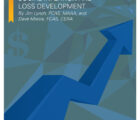 Being in the business of risk, the insurance industry should not take talent risk lightly. In case you missed it, talk of a talent crisis has loomed for years. Studies and statistics point to a significant workforce reduction thanks to baby boomers’ ongoing waves of retirement. By no means is insurance the sole industry to face this phenomenon, but the industry is being hit particularly hard because of decades-long challenges in asserting its brand position and appeal on a global scale. It’s time for the insurance industry to get out in front of entry-level talent and to tell its incredible story in a compelling way.
Being in the business of risk, the insurance industry should not take talent risk lightly. In case you missed it, talk of a talent crisis has loomed for years. Studies and statistics point to a significant workforce reduction thanks to baby boomers’ ongoing waves of retirement. By no means is insurance the sole industry to face this phenomenon, but the industry is being hit particularly hard because of decades-long challenges in asserting its brand position and appeal on a global scale. It’s time for the insurance industry to get out in front of entry-level talent and to tell its incredible story in a compelling way.
So, what can be done to meet hiring and retention needs? The answer is complex for many reasons. One contributing factor is that new and different hiring practices are needed. Advances in artificial intelligence, other automation and emerging technologies, as well as the burgeoning segment of insurtech, dictate the need for a hiring overhaul. From a talent pipeline perspective, something is already being done to mitigate this large-scale workforce disruption that has significant support among like-minded partners, but it needs the industry’s widespread attention to grow.
A Collegiate Beacon of Talent
For over 50 years, Gamma Iota Sigma (GIS) has fueled the insurance industry’s talent ranks through a full complement of world-class programs. GIS has partnered with faculty and university programs to cultivate a robust talent pipeline across all industry segments and functional areas. GIS is committed to showcasing the industry’s breadth of opportunity to students of all backgrounds. GIS is 5,000+ student members strong and is made up of all majors hailing from over 90 colleges and universities across North America. Considered the industry’s collegiate talent beacon, GIS is uniquely positioned to aggregate, analyze and present the student perspective on the recruiting process, and it has gathered compelling data to inform how the industry can best reach, recruit and retain top talent.
More than 725 students and recent college graduates from 76 schools participated in the 2019 GIS Annual Student Recruiting Survey, which was presented to GIS Sustaining Partners and talent advocates during the GIS Annual International Conference in the fall of 2019. The results were widely distributed in a comprehensive infographic and a webinar that show key insights and trends and actionable takeaways for the industry. Following are a few insights gleaned from the survey results.
Exposure is the Dominant Change Agent
A little exposure can go a long way, but a lot of exposure can go even further. Internships, campus speakers, faculty and career-related events have been significant factors in beckoning students to an actuarial career. It’s a strategic move for insurance companies to have substantial presence on college campuses. The relationships established there can be a vital source of talent. GIS presents a full complement of year-round single-access-point programming in both live and virtual formats to meaningfully connecting students with opportunities throughout the industry. Registration is open for the Annual International Conference, a forum designed to connect with, develop and recruit the rising generation. The conference includes the largest career fair of its kind and has been attended by over 650 students of all majors from 65+ colleges and universities.
GIS chapters are also doing their part by engaging student members to serve as GammaSAID diversity and inclusion (D&I) officers. A student-led initiative, GammaSAID offers a best practices framework for making D&I part of everyday conversations, intentions, outreach and events, all while promoting the profession among other majors and student groups.
GIS has also launched One Campus At A Time, an outreach program supported by Chubb and Spencer Educational Foundation, who are Lead Partners and GIS Sustaining Partners. The program incorporates industry insights from the Insurance Information Institute (I.I.I.) into ready-made resources to connect with students. A cornerstone of this initiative, Boots on the Ground Month, is a call to action for insurance professionals to go to schools to tell the stories of their careers. The program runs throughout the month of October, but those looking for talent need not limit their efforts to just special months.
Two other takeaways from the survey show that it’s never too late to change a career path (many juniors and seniors do change their majors) and that majors other than actuarial science are not barriers to entering the profession.

Internships: Critical Building Blocks
Internships are like test drives for students and employers: Interns can determine if they would be happy with the work, and companies can evaluate whether the students would be good employees.
Although deemed valuable investments for students and employers, internships are not that plentiful nor are they offered in all functional areas. The GIS survey results show that 58% of seniors and recent grads report having had one or no internships. GIS recognizes this as an opportunity to improve.
Open floorplans and work-from-home options tick all the boxes and can add up to considerable organizational and operational cost savings for employers. But it is a misstep to accept prevailing stereotypes as defining the rising generation.
Beyond the Annual International Conference and campus-specific programming, another upcoming national event is the Leadership Symposium, which begins the academic year convening a group of 120 chapter leaders. Two GIS events that just concluded, the Regional Conference Series on January 24-25 and The Pipeline Virtual Career Fair on February 11, showcased many internship opportunities and resources available to students. Internships are always free to post on the GIS Career Center, an industry-wide resource and forum exclusively for internship and entry-level opportunities across all functional areas. Companies are welcome to take advantage of all of these GIS platforms.
Debunking Generational Stereotypes
Over the past decade, employers have striven to attract talent by appealing to perceived notions of workers’ modern preferences. The advent of open floorplans and work-from-home options tick all the boxes and can add up to considerable organizational and operational cost savings for employers. But it is a misstep to accept prevailing stereotypes as defining the rising generation. Employers often think that modern talent prefers a more virtual recruiting environment too. The survey data, however, shows otherwise.
While 61% of respondents conducted their initial job searches on online career platforms, only 15% credited these as the ultimate source for an internship or full-time position. Students valued tangible relationships, career fairs, alumni and faculty networking, and internships far more as means for getting their jobs. Students are also attuned to diversity and inclusion considerations for their prospective employers. Sixty percent indicate that a commitment to and demonstration of diversity at all levels of the company is important, and 52% stress demonstrated fairness in recruiting practices.
Conclusion
Students entering the workforce want much the same thing as the rest of us: a fulfilling, growth-oriented and stable career.
The insurance industry can offer this kind of career, but it must revolutionize the way that it recruits and sustains a robust, diverse talent pipeline.
For more information on GIS, visit https://www.gammaiotasigma.org/.











